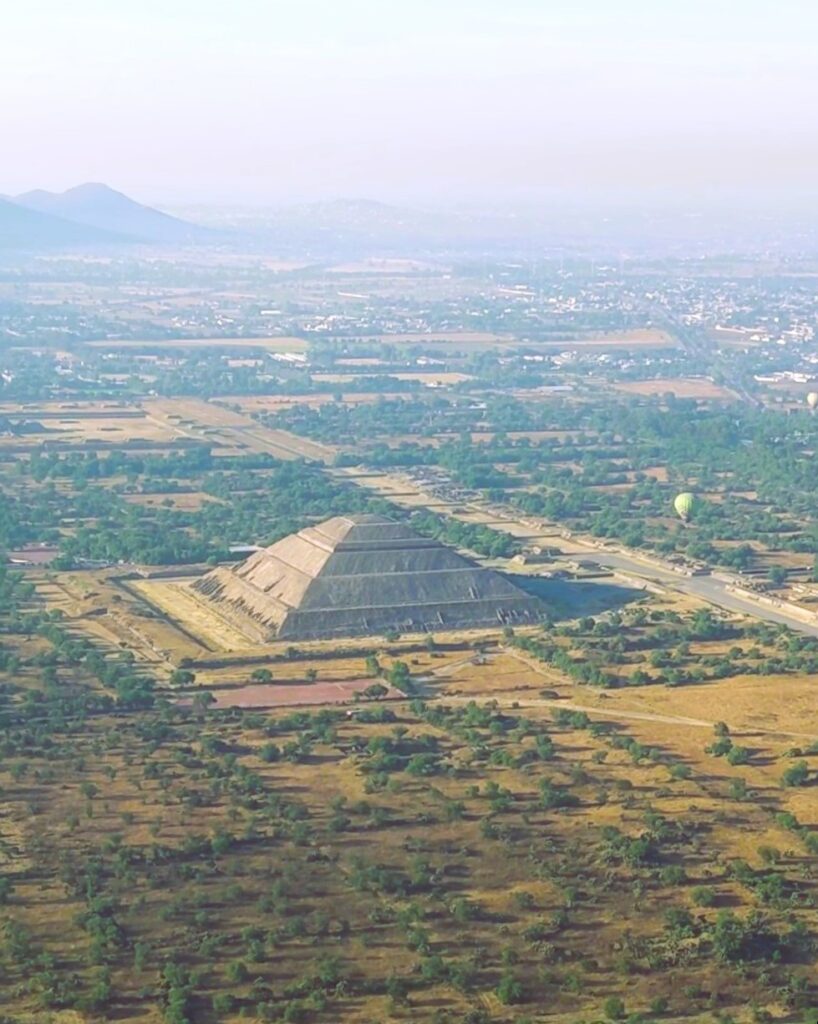
The Ancient City of Teotihuacán
Deborah and I talked for years about going up in a hot air balloon, and we almost did a few times, but we never pulled the trigger. That is, until on a recent stay in Mexico City, we ventured 30 miles northeast of the capital to see the ancient city of Teotihuacan, which was the largest city in the Americas as late as 500 CE.
Known for having impressive pyramids, temples, and a well-planned urban layout for the period it was built, we figured this historic city would be the perfect place to get in a small basket with giant flames shooting above us.
I have to admit that as we started our ascent and saw fireworks being set off nearby in a local town celebration, my stomach got a little uneasy. But as it turned out, the hot air balloon rides, which are so popular over Teotihuacan, gave us the perfect vantage point as we floated over 2000-year-old pyramids that soar into the sky. Thousands of feet above the ancient city, the view was too magnificent to think about anything else.


A Long and Storied History
The history of Teotihuacan is a subject of ongoing research and study by archaeologists and historians. It is believed that the city began as a small settlement around 200 BCE, gradually developing into a significant urban center by 150 CE. The early inhabitants were likely of various ethnic backgrounds, including Otomi, Zapotec, Mixtec, and Nahua peoples.
The period between 150 CE and 600 CE marked Teotihuacan’s heyday. It expanded rapidly and became one of the largest and most influential cities in the world. The population eventually reached an estimated 200,000 people, making it the most populous city in the world at the time.
One of the most remarkable aspects of Teotihuacan is the urban planning and layout of the city. Teotihuacan was designed with a grid pattern of streets, grand avenues, and monumental structures. The main axis of the city, known as the Avenue of the Dead, was flanked by impressive pyramids, temples, and palaces.
Legacy and Influence
The three most significant structures in Teotihuacan are the Pyramid of the Sun, the Pyramid of the Moon, and the Temple of the Feathered Serpent (Quetzalcoatl). These temples were not just places of worship but also served as centers of political and economic power. We were blown away by the amazing condition of these ancient pyramids, especially the detail we were able to see from a bird’s-eye view.
As vast and well-designed as the city was, around 600 CE, Teotihuacan experienced a sudden and catastrophic decline. The reasons for this decline are still debated among scholars, but theories include internal unrest, resource depletion, or even external invasion. Whatever the cause, the city was largely abandoned, and the inhabitants dispersed to other regions.
Despite its decline, Teotihuacan had a lasting impact on Mesoamerican civilizations. The city continued to be revered as a sacred site by later cultures, including the Aztecs, who considered it the birthplace of the gods. Teotihuacan’s influence on subsequent Mesoamerican cities, such as Tenochtitlan (the Aztec capital), is evident in architectural and religious similarities.
Teotihuacan remains an essential archaeological site, providing invaluable insights into the pre-Columbian history and culture of the region. The mysteries of the city continue to captivate researchers and visitors alike, making it a UNESCO World Heritage Site and a popular tourist destination.







